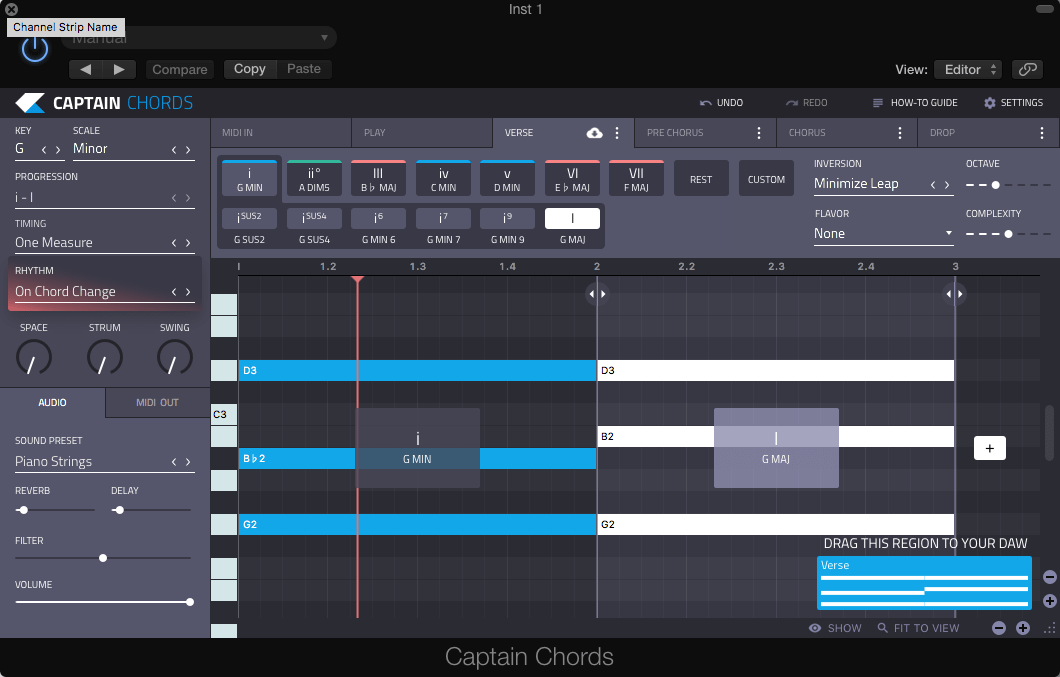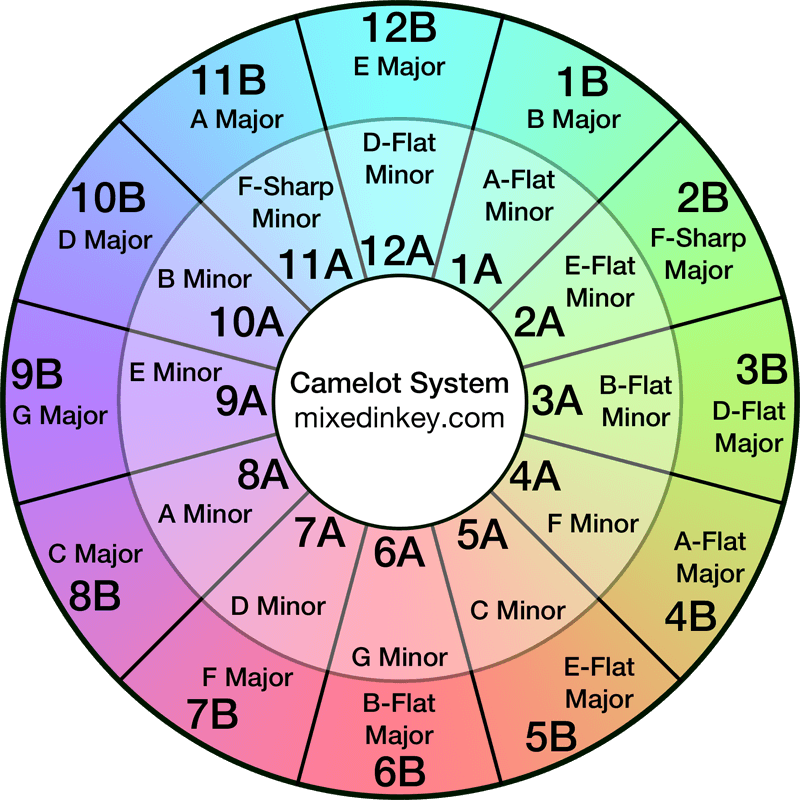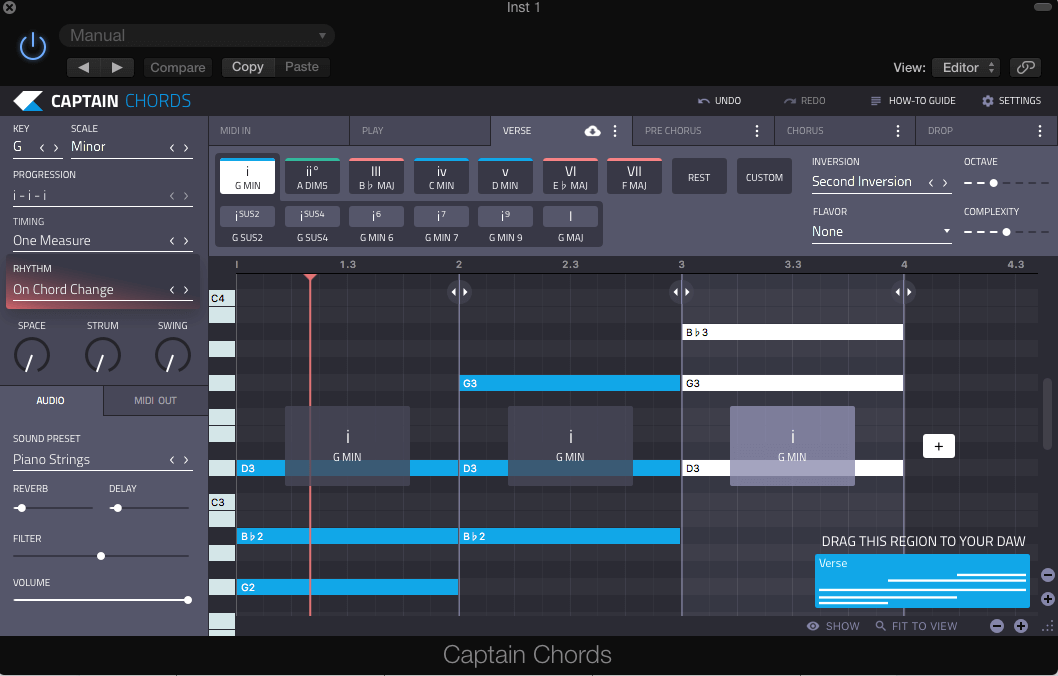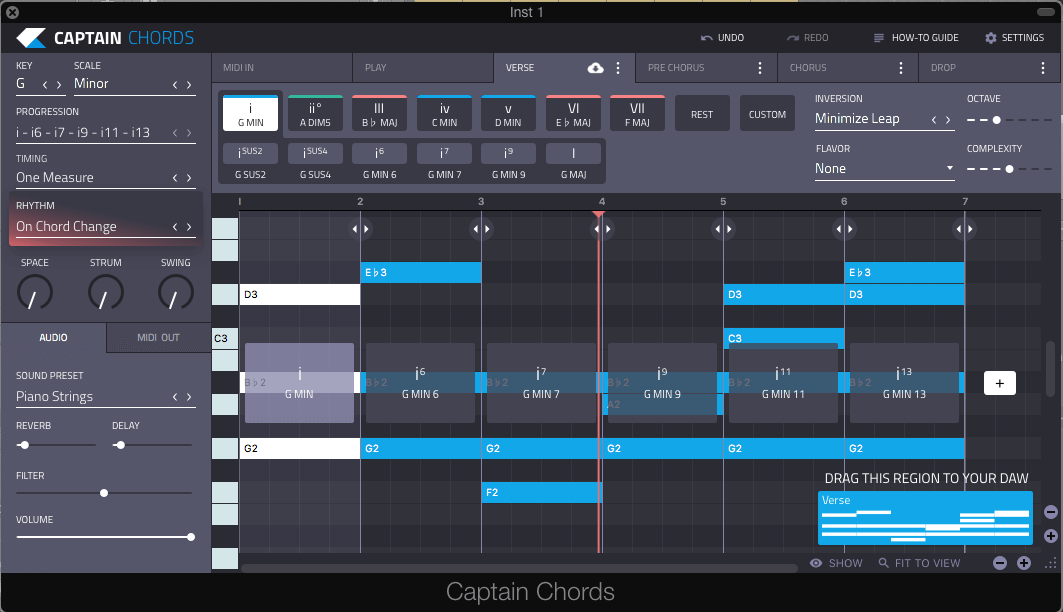The chord of G Minor

Gnarly af bro
Chords have characteristics. Personalities, almost. Master composer Schubert even wrote a directory to explain this, in which he proclaimed G Minor to be the sound of “Discontent, uneasiness, worry about a failed scheme; bad-tempered gnashing of teeth; in a word: resentment and dislike.” while another classical composer, Charpentier, described the sound of G Minor as “serious and magnificent”.
These descriptions may be several hundred years old, but play G Minor on the piano and you will surely notice its foreboding, gloomy yet powerful tone.
In modern music, G Minor can be used effectively in most styles ranging from EDM, hard dance, Drum n Bass and Heavy Metal to Hip-Hop and Pop songs that seek to convey a sense of meanness, disquiet or other powerful, acerbic emotions.
Write chords faster with Captain Chords
- Write your own chord progressions
- Apply rhythms to your chords
- Set your Key and Scale for the entire song
- Explore different chords and discover your favorite combinations
- Compose music and write your own songs
- One touch plays 3 notes of the chords
G-force
Listen to Will.I.Am Ft Justin Bieber – That Power for a great example of a pop song in G Minor that harnesses the menacing nature of the chord yet makes an accessible, danceable track with it. By contrast, Borgore – New Gore Order exploits that menace and uses it to create a face-melting Dubstep banger not for the faint-hearted!

Let’s analyze G Minor. Like all tonal chords, it’s generic form is a triad – or three notes played simultaneously – and it starts with it’s own root note, which is, of course, G.
The magic number
Every triad starts with the root note and ends with a perfect fifth – five whole notes up from the root. The middle note is really important as it decides whether the chord is Minor or Major. Check out this simple chart below:
| G Chord | Root (AKA ‘Tonic’) | Interval 1 | Interval 2 |
|---|---|---|---|
| Minor | G | B Flat | D |
| Major | G | B | D |

The chart shows us the simple difference between G Major and G Minor. It also tells us that G Minor consists of three notes: G, B Flat and D.
Relatively speaking
Every Major chord has a relative Minor chord that complements it. If you’ve ever seen the Mixed in Key Harmonic Mixing Wheel (AKA the ‘Camelot’ Wheel) you’ll be familiar with the way chords ‘connect’ based on their position on the wheel.

The outer ring has the Major chords, the inner ring has Minors. Look at the bottom of the wheel. 6A = G Minor, and is positioned next to 6B = B Flat Major. These are ‘relative’ chords – very useful when writing chord progressions as you know they’ll sound ‘correct’ even when played on top of one another.
Minimize the Leap
When playing G Minor, you can change the way it’s played and play either of the triad notes at the bottom. Check out the video example below, where you can see and hear the difference between the three ways of playing the same chord. The sound is almost the same and the pitch is identical. These are sometimes referred to as inversions.
These inversions are scored in different ways:
First Inversion
| Bottom | Middle | Fifth |
|---|---|---|
| B Flat | D | G |
Second Inversion
| Bottom | Middle | Fifth |
|---|---|---|
| D | G | B Flat |

Why invert?
Inverting chords gives musicians different ways of playing the same chord in different positions on the keyboard – minimizing the distance between chords. That’s where the term ‘Minimize the leap’ originates – something you can easily replicate in Captain Chords.
Flavors and Suspended Chords
We can make G Minor more complex and interesting by adding additional notes. It’s like adding spice to your chord – so be careful not to overdo it.
These additional notes come from the overall diatonic scale of the note, which takes a bit of time to learn.
Each one adds its own flavor, which is why they are sometimes referred to as flavors. It’s super simple to add these flavors in our Captain Chords software – you just select the flavor you want and audition it live within your composition.

The diatonic scale of G Minor
Flavor:
| Root | Third | Fifth | 6th | 7th | 9th | 11th | 13th |
|---|---|---|---|---|---|---|---|
| G | B Flat | D | E Flat | F | A | C | E Flat |
Suspended:
| Root | Third | Suspended 2nd | Suspended 4th | Fifth |
|---|---|---|---|---|
| G | B Flat | A | C | D |
There are fewer potential suspended notes, since they fit in between the root and fifth. There are two options, in fact, which makes sense if you think about it: 1 is taken by the root note, G. 3 is taken by the first interval, and 5 is taken by the perfect fifth. This leaves just 2 and 4 as possible destinations for our suspended notes.
Write your own Chords using Captain Chords
It’s super easy to create your own ideas from scratch. Visit the official Chords homepage and see how it will help you explore music and write your own original productions.
